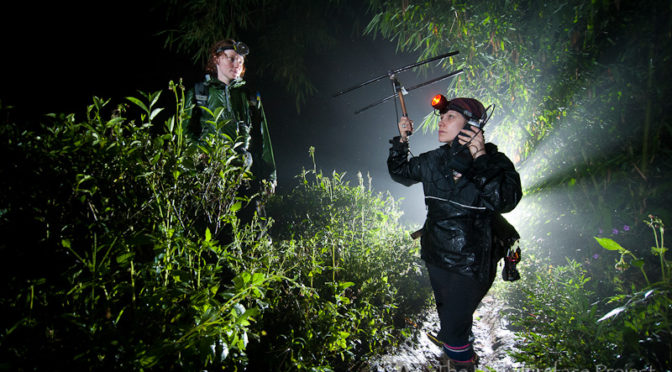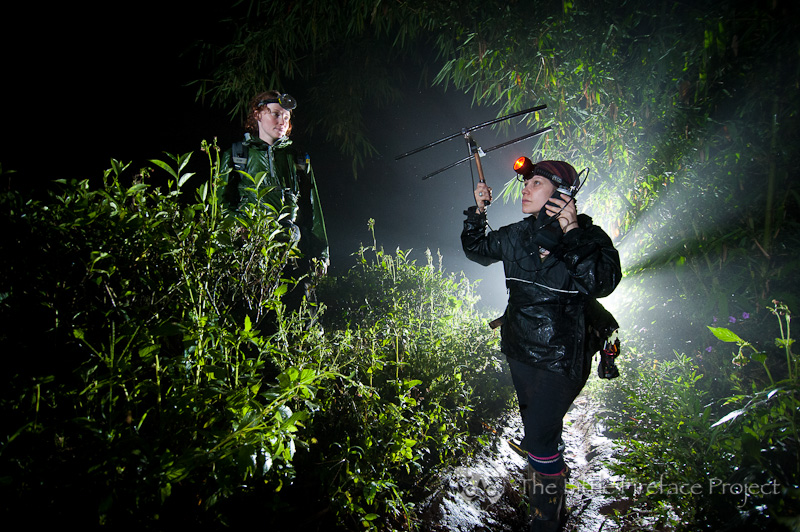As we embark on our 8th annual Slow Loris Outreach Week (you can see resources here!), as the Director of the Little Fireface Project, I thought I would reflect a bit on what it was like to study lorises some 25 years ago, and how it is now!

I first went to the field to look for lorises and pottos in 1994. This was in fact as part of a fruit bat research expedition, but I already knew I was going to do my PhD on lorisiformes and we searched for those elusive primates to no avail! As a vegetarian, the one thing that trip taught me is that I could not do my field work in West Africa, so I sought a country with a more plant-based diet – India! After that, I studied slender lorises in Sri Lanka, pygmy lorises in Cambodia, Bengal slow lorises in Thailand, India and Cambodia with a peek at Vietnam, Langkawi and China, greater slow lorises in Malaysia and Singapore, Hiller’s slow lorises in Sumatra, Philippine slow lorises in Sabah, and of course our now long-term field study of Javan slow lorises on Java, Indonesia. What has changed and what is different?
Well, remarkably, there are still only a handful of field studies of slow and slender lorises, and in the last 30 years, when technology has been a bit better, only a single pottos study and nothing done on angwantibos! Even surveys are rare, and thus with little data about where these animals are found, how many are left, and even how many species there are, there is still a lifetime of information to be learned – and maybe not that long – because although some of them, like pottos and angwantibos, are considered Least Concern, these assessments are made with virtually no data at all.
Fieldwork itself has changed dramatically. There are expectations of regular almost daily or weekly reporting because of Internet and social media – even when the Internet is available, it can be very slow and wastes precious time. The Internet also means that students and volunteers don’t get the same experience of isolation in the field, immersion in local culture, focus on their studies, with huge distractions from home, home sickness, addiction to being online, etc. and thus it is very hard to keep volunteers and field workers who simply no longer can live simply. The availability of the internet and ‘always someone to ask’ means that the modern student and field biologist limits their critical thinking and even clouds what they see – instead of interpreting a behaviour through their own lens, or come up with a unique method to solve the problem, the Internet is always there to check. This is really sad!
Technology offers some great alternatives – radio collars and activity loggers are now tiny and last a long time; good rechargeable batteries allow for all night observations; video technology means we can record behaviours we could not show the world before. At the same time, having a computer in the field again means instead of spending a precious one or two years with the animals, people get absorbed onto their computers – not just to enter data, but to get so focussed on what comes after the field work that they forget to do the field work itself. I recently came across my first report from my PhD (see above), written to my funders at the time, one of whom still funds our loris project today! (Sophie Danforth Conservation Biology Fund of the Roger Williams Park Zoo!). Not only was the thinking process different to write such a report coherently, the nature of the language is different, and the feeling of receiving that report and the replies was also different. It might have taken months for it to be delivered and the anticipation of sending and receiving those hand written reports is something almost totally lost today.
I am absolutely glad I lived in an age without the Internet and have the skills that that total independence brought me. And as much as I love to use the Internet to try to engage people with the plight of lorises and pottos, such as with Slow Loris Outreach Week, I also recognise that it is the Internet itself that is one of the main threats to these amazing animals, not just in their exploitation being sold as pets, paraded as props and used as medicines, but also in the way it has changed many people to think mainly about themselves or to be lost in their phones and not connected to the world around them. There is no doubt the Internet can also be used for good, so if you are reading this on your phone, tablet or computer, recognise that as amazing as technology is, to still appreciate the world around you and seize the day to embrace the beauty of the animals, people and environment you can actually touch. All week, we will be giving tips on how you can become more engaged with your environment and how things you do in your daily lives can help animals like lorises and pottos – so please join us! Happy Slow Loris Outreach Week!
Little Fireface Project Director, Prof Anna Nekaris




